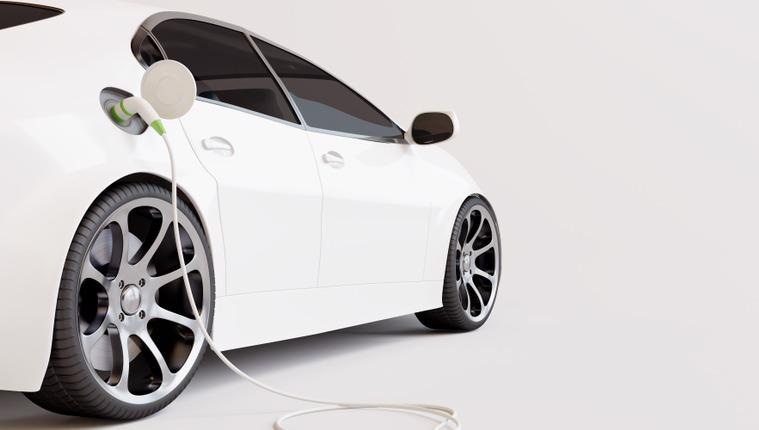AZoM spoke to Dr. Vibha Kalra, George B. Francis Chair Professor and the Director of the Ph.D. Program in the Department of Chemical and Biological Engineering at Drexel University, about her research that has made a breakthrough for the use of lithium-sulfur batteries.
Please can you introduce yourself, your background, and how you began researching battery technologies?
I am a George B. Francis Chair Professor and the Director of the Ph.D. Program in the Department of Chemical and Biological Engineering at Drexel University. My Ph.D. at Cornell University focused on the study and development of novel nanomaterials and control of their multi-scale architecture (from the nanoscale to macroscale).
Right around the time when I started at Drexel as a professor, electric vehicles were starting to be launched in the marking and it was an exciting time for starting to move away from fossil fuels. However, the Li-ion batteries, which are the best in the market, have reached a theoretical limit with respect to capacity and energy storage per weight, and therefore the battery packs in present-day electric cars are extremely heavy, large, and expensive.
So, we identified a need for next-generation disruptive battery technologies and with our unique expertise in novel multi-scale materials, we felt we could make an impact in the energy storage field and this started our journey in the field of next-generation batteries.
With even more attention brought towards electric vehicle use, research attention has been shifting toward sulfur batteries instead. Why is this?
Li-ion batteries were commercialized 30 years ago and have undergone a significant amount of development both in industry and academia. As of now, they have reached a theoretical limit with respect to specific energy storage. Moreover, they incorporate expensive heavy metals such as Co, Ni, Mn.
Li-S batteries exhibit a 5-fold higher theoretical energy density and have huge potential to reduce battery weight and cost. Sulfur is earth-abundant and is a by-product of the petroleum industry and therefore very cheap and environmentally friendly (compared to heavy metals in Li-ion batteries). Sulfur can also be potentially combined with much cheaper anodes such as Silicon, sodium, which could eliminate the need for Lithium.
Up until now, commercial sulfur battery operation has been limited by adverse reactions between carbonate and polysulfides, and the inclusion of volatile ether electrolytes to mitigate this. How did you approach solving this problem?
When we started this work, our initial objective was to develop sulfur deposition techniques to physically confine sulfur within the nanopores of carbon to prevent direct contact between the carbonate solvent and intermediate sulfur products (polysulfides) and consequently mitigate adverse electrolyte-sulfur reactions.

Image Credit: aanbetta/Shutterstock.com
Our process wasn’t quite successful at first in confining the sulfur, but in the process, we developed this rare form of sulfur, which altered the redox mechanism, such that it eliminated the formation of intermediate polysulfides. This meant the batteries not only operated in carbonate electrolyte but also ran stably for thousands of cycles
What are the effects of removing ether electrolytes on battery performance?
Ether electrolytes are flammable liquids with components that have boiling points as low as 40-50 degrees C, so they cannot be used in practical batteries.
Carbonate electrolytes, on the other hand, have boiling points above 200 degrees Celsius and have been used commercially in the Li-ion battery industry for the past three decades. Moreover, over the past 30 years, numerous developments have been made on carbonate electrolyte and its additives for a host of functions such as flame retardancy, SEI formation for Li stability, etc. which can all be leveraged in Li-S batteries if carbonate electrolyte is used.
Can carbonate-based Li-S batteries outperform Li-Ion batteries on a real-world scale?
As mentioned above, Li-S batteries have a very high theoretical limit compared to Li-ion battery materials. With the right development on cathode, anode, and electrolyte, Li-S batteries can provide much higher practical energy densities.
During your experiments, you produced monoclinic gamma-phase sulfur. What is this and why is it significant?
Sulfur at room temperature exists as S8 in orthorhombic crystal structure – it's like a rectangular prism. Monoclinic sulfur is another crystal system known to be unstable below 95 degrees Celsius. It's also like a rectangular prism but with a parallelogram base. We have stabilized the gamma phase within the monoclinic crystal system. What that means technologically is that it alters the redox mechanism in a way that it prevents adverse carbonate-sulfur reactions and enables a carbonate-electrolyte-based Li-S battery that runs for thousands of cycles.
Do you believe we will one day be able to move entirely away from lithium use in batteries?
Lithium is the lightest metal and can store the most energy per weight, and is therefore great for batteries. Nevertheless, given the limited reserves of lithium and rising prices and demand, we will need alternatives in the intermediate future (if not in the immediate future) and therefore it is important to invest in extensive research on alternate metal technologies starting now both in industry and academia.
What are the next steps? Will you continue to research battery technology?
Yes, we have several ongoing projects on Sulfur cathodes, lithium anode stability, as well as electrolyte additives. Additionally, we work on alternate metal technologies such as Na-S and Na-ion batteries.
About Dr. Vibha Kalra
 Dr. Vibha Kalra is George B. Francis Chair Professor and the Director of the Ph.D. Program in the Department of Chemical and Biological Engineering. Additionally, she serves as the associate editor of the Chemical Engineering Science journal, since 2013. Kalra received her BS from the Indian Institute of Technology (IIT), Delhi, India in 2004 and Ph.D. from Cornell University in 2009, both in Chemical Engineering. Prior to joining Drexel in the Fall of 2010, Kalra worked in the electronic packaging research division at Intel Corporation. Her research group combines material assembly & characterization, the study of fundamental electrochemical behavior, in-situ spectroelectrochemistry, and device assembly and testing to develop next-generation batteries and supercapacitors. She has published close to 60 peer-reviewed journal articles and has 10 pending/issued patents in the field of energy storage.
Dr. Vibha Kalra is George B. Francis Chair Professor and the Director of the Ph.D. Program in the Department of Chemical and Biological Engineering. Additionally, she serves as the associate editor of the Chemical Engineering Science journal, since 2013. Kalra received her BS from the Indian Institute of Technology (IIT), Delhi, India in 2004 and Ph.D. from Cornell University in 2009, both in Chemical Engineering. Prior to joining Drexel in the Fall of 2010, Kalra worked in the electronic packaging research division at Intel Corporation. Her research group combines material assembly & characterization, the study of fundamental electrochemical behavior, in-situ spectroelectrochemistry, and device assembly and testing to develop next-generation batteries and supercapacitors. She has published close to 60 peer-reviewed journal articles and has 10 pending/issued patents in the field of energy storage.
Disclaimer: The views expressed here are those of the interviewee and do not necessarily represent the views of AZoM.com Limited (T/A) AZoNetwork, the owner and operator of this website. This disclaimer forms part of the Terms and Conditions of use of this website.